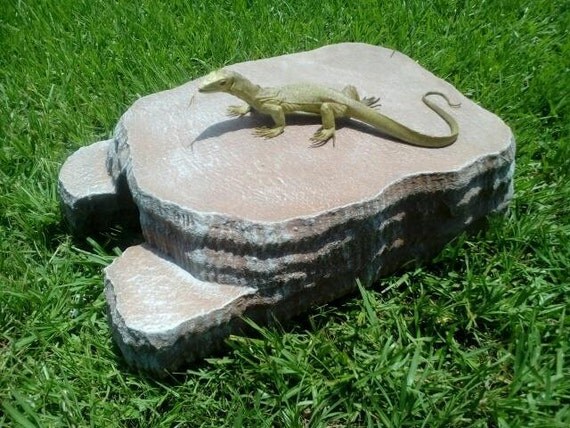
This will keep your reptiles brain active and prevent your reptile from becoming overweight.Ĭaves are a great place for reptiles to rest. Different fake plants can be used for individual reptile environments, for example cactus can be used in desert reptile set ups or denser, green, fake plants can be used in rainforest reptile environments.įake plants recreate a reptiles natural environment making them feel safe and comfortable, even reptiles born and raised in captivity will benefit from fake plans as they naturally feel more comfortable being less exposed as the artificial plants give some cover from above.įake plants can also go underwater without becoming damaged, making artificial plants perfect for turtle tanks.Īrtificial plants in reptile tanks also give food items somewhere to hide, for example crickets or live fish can hide in the fake plants meaning the lizards and turtles have to move leaves or branches to find their food. I painted the inside of the cave black.Īnd that’s it! I have the cave from this post listed on eBay, so if you live in the UK and need a reptile cave, check it out here.Artificial plants provide your pet reptile with somewhere to hide from predators (even though we know they are safe in their tank). I began with a coat of dark grey, then added two more coats of lighter and lighter grey, brushing the surface of the cave gently to leave the darker colours peeking through. When the tile grout has dried, I started to paint the cave with acrylics. I left the cave to dry for one or two days, turning it over every now and again to let all sides dry. I didn’t want the surface of the cave to be smooth, and the imperfect smudges of tile grout look more natural. It filled the remaining holes and left a nice texture. I then added PVA into the holes to seal them and left the cave to dry overnight.Īs the next step, I covered the whole cave – inside and outside – with tile grout. Next, I cut off small bunches of plastic foliage (I bought a big ball-shaped bunch of these in Poundland) and stuck them into the cave. It sometimes takes up to 2 days in my case (I rotate the cave in the process so that both the outside and the inside have a chance to dry). The time needed for that will depend on the amount of filler used and air humidity. Let the filler fully dry and harden before proceeding to the next step. Cover big holes both on the inside and the outside of the cave. It doesn’t need to be perfect, small holes will get filled at a later stage. Expanding foam sometimes grows with trapped air pockets which turn into bubbles. Next, use a universal filler to fill any big holes in the structure of the cave. Place the cave on an even surface and make sure it stands without wobbling and there aren’t any big gaps. I like to carve the outside of the cave so that it has sharp edges and isn’t perfectly round, as it makes it look a bit more like a real rock.Īs a final touch, use sandpaper or a sanding block on the bottom edge of the cave to make it flat and even. It may be a bit tricky to scoop out the foam from the inside in a nice, round shape, but it doesn’t need to be perfect as the inside of the cave won’t be visible. When the blob of expanded foam is ready to be carved, cut it to shape with a sharp knife. Follow the instructions on the can and only proceed to the next step once the foam has set. The foam will dry on the outside fairly quickly, but it may take up to 24 hours for it to fully set inside. Keep in mind that expanding foam will increase its volume, so make it a bit smaller than the size of the hide you’d like to have. Make a blob of expanding foam on the paper. However, it doesn’t stick to greaseproof paper. Expanding foam will stick to your floor/table and it will be difficult to clean. Line your working surface with greaseproof paper and make sure there aren’t any holes. For now, I’m just listing the caves on eBay.


When I finally own a reptile myself I will make multiple pieces of DIY decor for its enclosure.

All products used in this project are reptile safe, and the texture of a finished cave is quite rough, which will add enrichment to a reptile enclosure and help the animals shed. There’s a few species I’d love to own in the future, when my life is more settled, but for now I appreciate the scaled beauties on the screen, watching nature documentaries and educational videos on YouTube. I don’t actually own any reptiles and I never have. So I thought, why not combine both in one endeavour? However, there are two things that consume more of my mind than others – DIY projects and reptiles. My list of interests and hobbies grows every day and it would cost a fair amount of paper to write them all down.


 0 kommentar(er)
0 kommentar(er)
